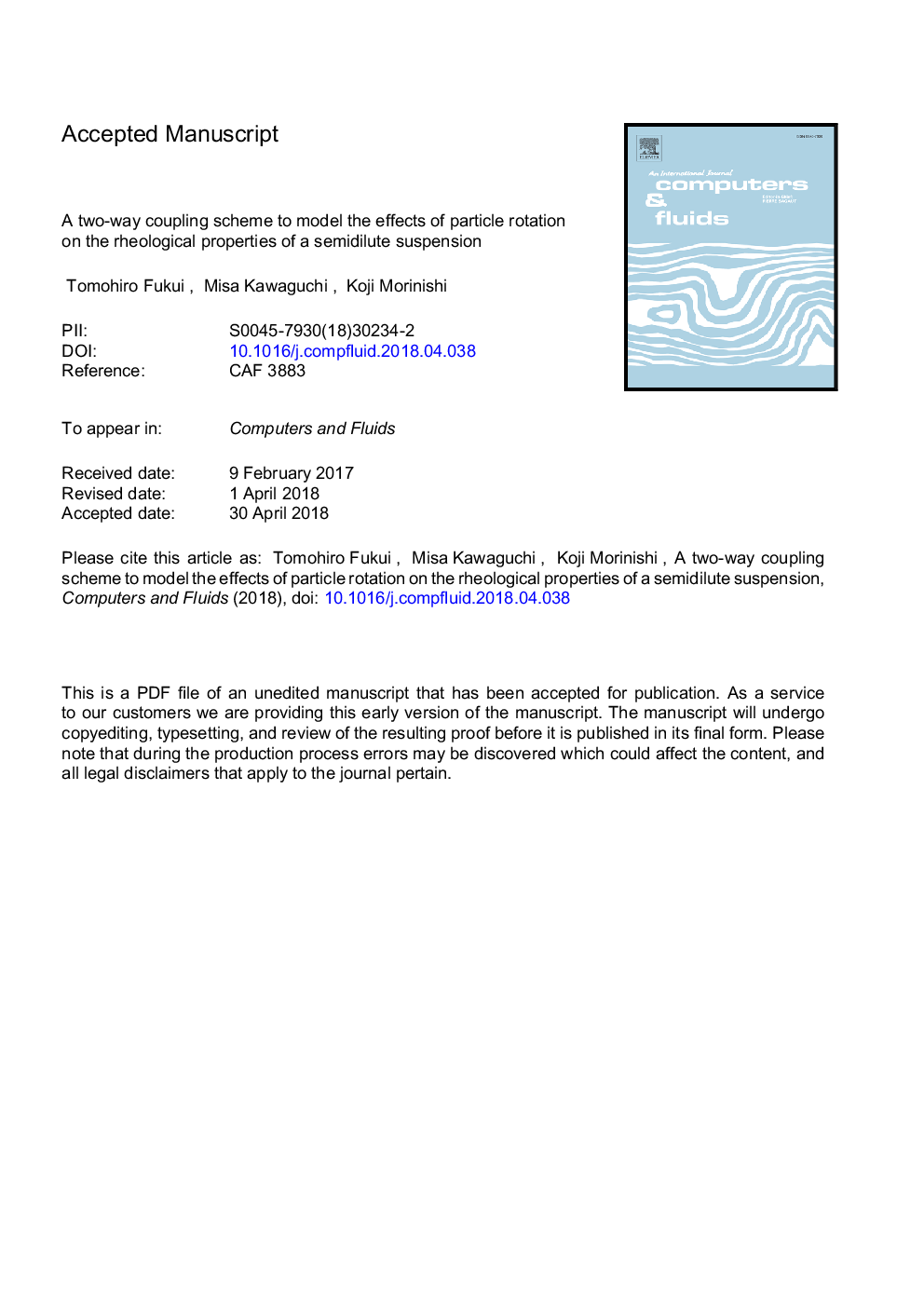| کد مقاله | کد نشریه | سال انتشار | مقاله انگلیسی | نسخه تمام متن |
|---|---|---|---|---|
| 8942090 | 1645058 | 2018 | 44 صفحه PDF | دانلود رایگان |
عنوان انگلیسی مقاله ISI
A two-way coupling scheme to model the effects of particle rotation on the rheological properties of a semidilute suspension
ترجمه فارسی عنوان
یک روش دوبعدی برای مدل سازی اثرات چرخش ذرات بر خواص رئولوژیکی تعلیق نیمه پائین
دانلود مقاله + سفارش ترجمه
دانلود مقاله ISI انگلیسی
رایگان برای ایرانیان
کلمات کلیدی
موضوعات مرتبط
مهندسی و علوم پایه
سایر رشته های مهندسی
مکانیک محاسباتی
چکیده انگلیسی
According to Einstein's viscosity formula, the effective viscosity of a suspension is related to the volume fraction Ï of suspended particles. Higher-order terms, which include contributions from hydrodynamic interactions, become more important when the concentration of the suspension reaches around 25%. The coefficient β of the term quadratic in Ï, however, has not been incontrovertibly validated. In order to investigate the effects on the macroscopic rheology of a suspension due to the rotational motions of the microscopic suspended particles-which are usually neglected in analytical and numerical studies-we have performed simulations of a pressure-driven flow using a two-way coupling method (defined in text). We used the regularized lattice Boltzmann equation for the fluid part of the calculation, and we employed Newton's second law of motion and the equation of angular motion for the translational and rotational motions of the rigid particles. As a result, we found that the particles rotate to achieve kinetic balance with the surrounding hydrodynamic forces, which results in a decrease in fluid resistance. It is therefore important to take into account the particles' rotational motions and the accompanying changes in the flow field in order to evaluate the effective viscosity of a suspension. The spatial variation of the relative viscosity determined from the wall shear stress becomes more significant with increasing area fraction. We found that the value of the coefficient β may increase due to hydrodynamic resistance against the rotational motions of the particles.
ناشر
Database: Elsevier - ScienceDirect (ساینس دایرکت)
Journal: Computers & Fluids - Volume 173, 15 September 2018, Pages 6-16
Journal: Computers & Fluids - Volume 173, 15 September 2018, Pages 6-16
نویسندگان
Tomohiro Fukui, Misa Kawaguchi, Koji Morinishi,
